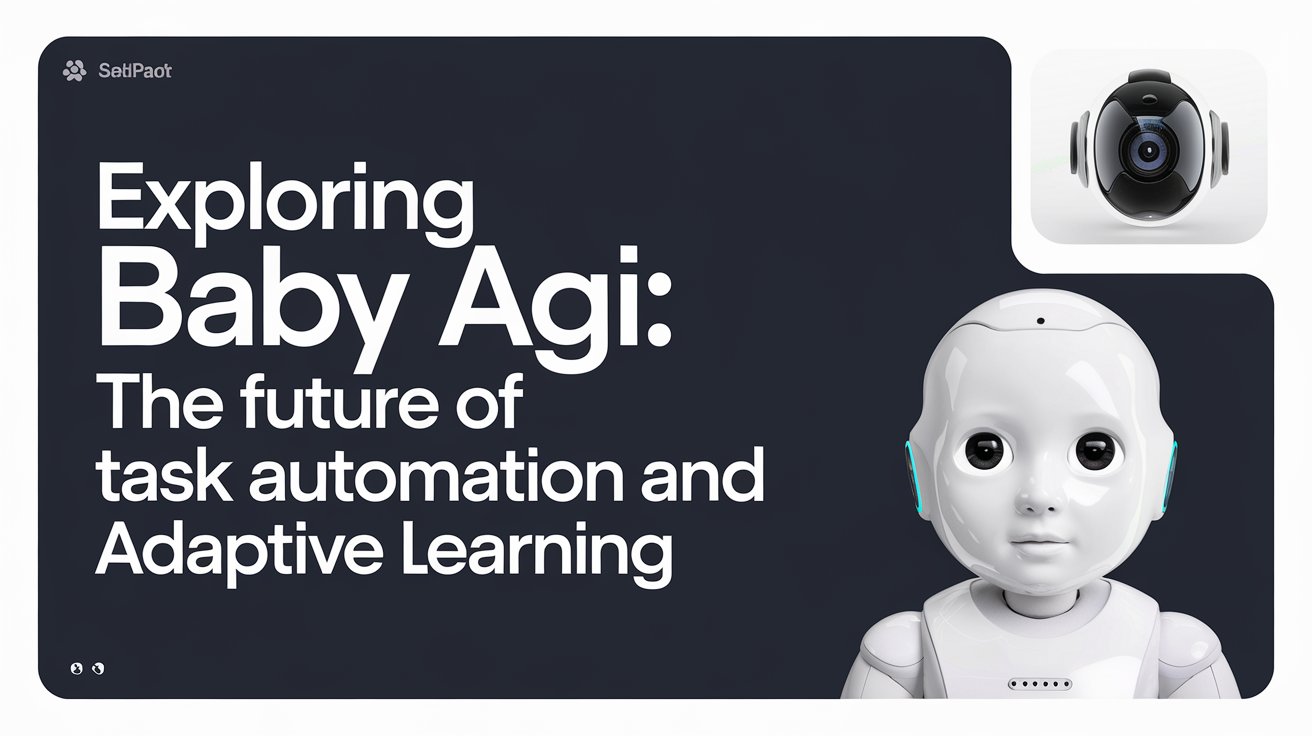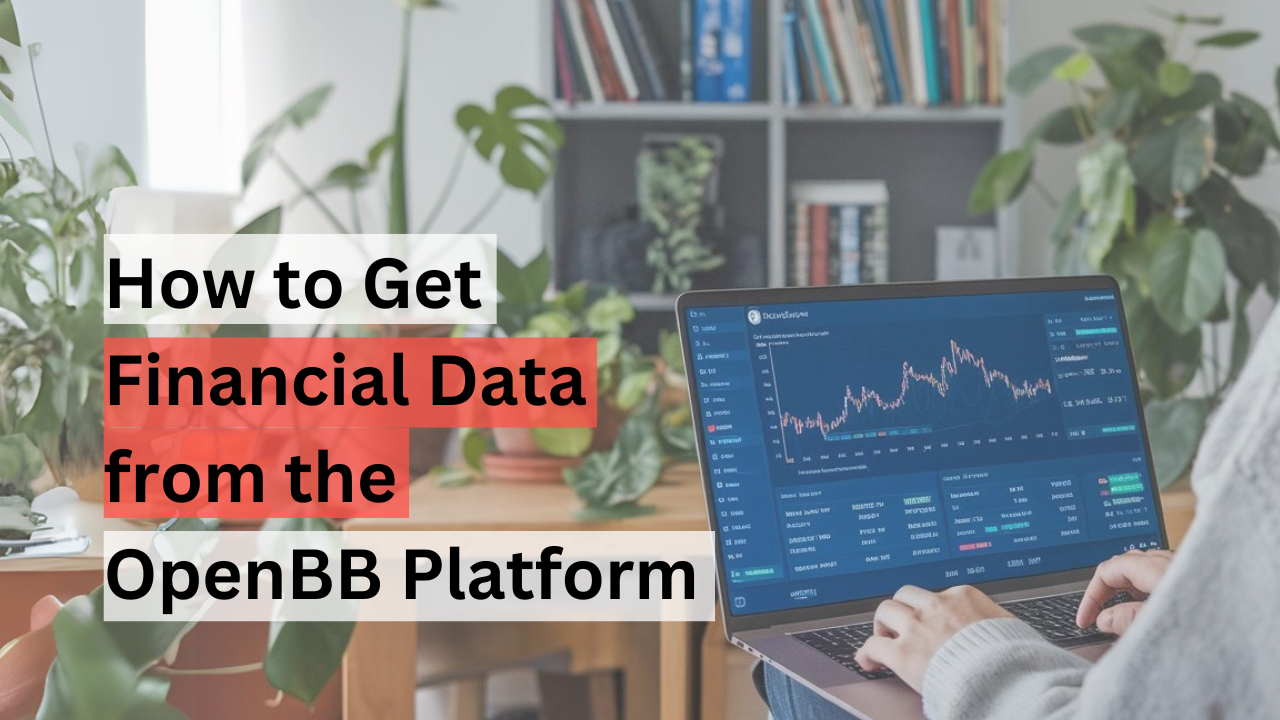Exploring Baby AGI: The Future of Task Automation and Adaptive Learning

Artificial intelligence is rapidly transforming the way we work, live, and interact with technology. A significant focus in this field has been on creating systems that not only perform specific tasks but also learn, adapt, and evolve like humans. Baby AGI represents a significant milestone in this pursuit. Inspired by the human cognitive process, Baby AGI is designed to autonomously create, manage, and execute tasks while learning from each experience. This blog aims to explore the intricacies of Baby AGI, provide a comparison with other similar AI systems, and examine its future prospects and applications across various industries.
Table of Contents
What is Baby AGI?
Baby AGI is an advanced task management and learning system built using OpenAI’s powerful APIs, Pinecone, and the LangChain framework. Unlike traditional AI models that excel in highly specialized tasks with defined parameters, it can autonomously generate, prioritize, and execute tasks while adapting to new information in real time. In essence, it operates as a self-learning AI agent capable of evolving and adjusting its behavior based on continuous feedback, similar to how a human child learns and improves from experiences.
The foundational concept is its ability to operate without explicit, step-by-step human guidance. It combines powerful AI models, knowledge storage, and task management strategies to enable the agent to effectively manage workflows. This autonomy makes it not only more capable but also more efficient compared to traditional AI systems, which require constant human intervention.
Key Features
Task Creation and Prioritization
The system has the unique ability to autonomously create new tasks based on its overarching objectives and the outcomes of previously completed tasks. For example, if the overarching goal is to optimize the productivity of a project team, it can independently decide which tasks to create, how they should be prioritized, and how to allocate resources effectively. It dynamically adjusts its priorities based on urgency, relevance, and dependencies, ensuring that critical tasks are always handled in a timely manner.
This adaptive task management allows it to streamline workflows by ensuring the most important activities are completed first, while less urgent tasks are put on hold until resources are available. This feature significantly reduces the overhead associated with manual task prioritization and helps teams focus on high-value activities.
Continuous Learning Mechanism
One of the most compelling aspects is its ability to learn continuously. Unlike static AI models that operate solely based on their initial training data, Baby AGI evolves with every task it completes. As it executes tasks and receives feedback, it incorporates this information into its knowledge base, enhancing its capacity to handle more complex tasks over time.
For instance, in a customer service environment, it could learn from customer feedback to improve response quality and efficiency. This continuous learning approach allows it to adapt to new information, refine its strategies, and improve its overall performance, leading to more effective and personalized task management.
User-Friendly Interface
Despite its advanced capabilities, the system is designed with usability in mind. It features an intuitive interface that makes it accessible to users with varying levels of technical expertise. Users can interact with it through simple natural language commands, eliminating the need for specialized training or technical know-how. This democratization of AI makes it suitable for individuals and teams across different sectors, from software developers to project managers.
Collaborative Tools
Baby AGI is also equipped with collaborative tools that enhance team productivity. It synchronizes tasks across multiple devices in real time, allowing for seamless communication and coordination among team members. This feature is particularly valuable in project management environments, where real-time updates and collaboration are crucial for keeping projects on track. By facilitating communication and ensuring everyone is on the same page, it helps reduce miscommunication and enhances the overall efficiency of team operations.
How Does Baby AGI Work?
The architecture of Baby AGI is centered around advanced natural language processing (NLP) capabilities, which allow it to interpret user commands, generate appropriate tasks, and provide insightful suggestions. At its core, Baby AGI functions as an interconnected system of agents, each responsible for specific tasks within the workflow. These agents interact with one another to create a robust, adaptable AI system that can effectively manage complex processes.

Task Execution, Creation, and Prioritization
The main components of its workflow involve task execution, creation, and prioritization. When given an overarching objective, it first breaks it down into smaller, manageable tasks. Once these tasks are executed, it evaluates the outcomes and generates new tasks that align with the overall goal. The process of creating and prioritizing tasks is dynamic, allowing it to adjust its focus as conditions change.
The feedback loop inherent in its architecture is one of its defining features. This loop enables the system to refine its actions based on previous experiences, allowing it to operate in a way that feels almost human-like in terms of adaptability and responsiveness. The system can continue generating and managing tasks indefinitely, or until the user decides to intervene and stop the process.
How to Set Up
Setting up Baby AGI involves a few straightforward steps, making it accessible for individuals and organizations interested in leveraging its capabilities. Here is a step-by-step guide:
- Clone the Baby AGI Repository: Begin by cloning the repository from GitHub using Git. This will provide you with the source code needed to get started.
- Install Required Packages: Next, install the necessary packages and dependencies. These typically include Python libraries for natural language processing, as well as tools required for integrating with OpenAI’s APIs and Pinecone.
- Configure API Keys and Environment Variables: It relies on several APIs, including those from OpenAI and Pinecone. You will need to configure your API keys and set up environment variables to ensure these services are properly integrated.
- Define Task Objectives: Once the system is set up, define the overarching objectives. This could be anything from managing a project to analyzing customer data.
- Run the Script: Finally, run the script to initiate the system. From here, it will autonomously generate, prioritize, and execute tasks based on the defined objectives. Users can provide feedback as needed to guide its learning process.
The open-source nature makes it highly customizable, allowing users to tailor its capabilities to fit specific use cases. Whether you’re looking to automate simple daily tasks or manage complex project workflows, it offers the flexibility needed to adapt to various environments.
Comparative Analysis: Baby AGI vs. AutoGPT
While Baby AGI and AutoGPT share similarities in terms of utilizing AI for task automation and management, they have distinct differences in their approaches and functionalities.
Learning Approach
Baby AGI’s primary strength lies in its ability to mimic human-like learning. It continuously adapts, incorporating feedback to enhance its performance. This feedback-driven learning allows it to become more efficient and effective over time. In contrast, AutoGPT is largely focused on automating predefined workflows, making it less flexible in adapting to new or evolving tasks.
Task Management
When it comes to task management, Baby AGI stands out by autonomously generating and prioritizing new tasks based on the outcomes of previous actions. This approach ensures that it is always working towards optimizing its objectives, even as circumstances change. On the other hand, AutoGPT primarily automates tasks that are explicitly defined, making it more suitable for routine processes that require minimal human oversight.
User Interaction
In terms of user interaction, Baby AGI operates with a higher degree of collaboration. It requires ongoing feedback from users to refine its processes and improve its effectiveness. AutoGPT, however, is designed to function more independently, requiring minimal user input once the tasks have been defined. This makes AutoGPT more appealing for users who want a “set-and-forget” solution, while Baby AGI is ideal for those who prefer an AI that can adapt and improve with their guidance.
Applications Across Industries
The versatility of Baby AGI makes it a valuable tool across multiple sectors. Here are some key industries where it is making significant contributions:
Healthcare
In the healthcare sector, it can analyze vast amounts of patient data to enhance diagnostic accuracy and improve treatment plans. Its ability to predict health outcomes based on historical data allows healthcare professionals to provide personalized interventions. Additionally, it can assist in managing administrative tasks, such as scheduling and data entry, freeing up healthcare providers to focus more on patient care.
Education
Its adaptive learning capabilities are particularly useful in the field of education. It can customize learning content based on the unique needs of individual students, track their progress, and recommend tailored learning paths. This personalized approach to education helps students learn at their own pace and overcome specific challenges. Moreover, it can automate administrative tasks for educators, allowing them to concentrate more on teaching and student engagement.
Project Management
In project management, Baby AGI streamlines workflows by dynamically creating, prioritizing, and executing tasks. It enhances team communication by synchronizing tasks across devices and providing real-time updates, which helps prevent delays and miscommunication. This level of automation and coordination is particularly valuable in complex projects that require precise resource management and efficient execution.
Customer Service
It is capable of handling a wide range of customer inquiries, allowing human agents to focus on more complex issues that require personal attention. By analyzing customer interactions and feedback, it can also identify patterns and suggest improvements in service delivery. This results in a more responsive and customer-centric approach, enhancing overall satisfaction.
Research and Development
In research and development (R&D), Baby AGI assists teams in generating reports, gathering data, and brainstorming ideas. Its ability to autonomously create and prioritize tasks helps researchers focus on innovative aspects of their projects rather than getting bogged down with administrative work. This makes it an invaluable tool for driving innovation and accelerating the development of new products or technologies.
Finance
In the financial sector, it can analyze market trends, provide insights for investment decisions, and assist in risk management. By continuously learning from market data and adjusting its strategies, Baby AGI helps financial analysts stay ahead of potential risks and make informed decisions. Its ability to autonomously manage tasks also reduces the workload for financial professionals, allowing them to focus on high-level analysis and strategy.
Future Prospects
The future of Baby AGI is promising, with numerous potential advancements on the horizon. According to Yohei Nakajima, the creator, there are plans to enhance the system’s capabilities, including improved security features and more efficient handling of parallel tasks. These improvements aim to make it more robust and capable of managing even more complex workflows.
As AI technologies continue to evolve, Baby AGI is expected to play a crucial role in shaping the future of autonomous AI systems. you can check out Understanding GraphRAG: The Future of Retrieval-Augmented Generation in AI. Its ability to learn, adapt, and execute tasks with minimal human intervention positions it as a valuable asset for businesses looking to optimize operations, drive innovation, and reduce costs. Future developments may also include deeper integrations with other AI tools and platforms, expanding its capabilities and making it even more versatile.
Conclusion
Baby AGI represents a significant advancement in the field of artificial intelligence, combining advanced task management with adaptive learning to create a self-sustaining AI agent. Its ability to autonomously generate, prioritize, and execute tasks while continuously improving through feedback makes it an invaluable tool across numerous industries. From healthcare and education to finance and project management, it is transforming how we approach work, making processes more efficient and allowing professionals to focus on higher-value activities.
As AI technologies continue to advance, Baby AGI and similar systems will likely become integral components of future business operations. By embracing these technologies, organizations can drive innovation, improve efficiency, and achieve significant cost savings. The potential is vast, and its evolution will undoubtedly contribute to shaping the future of AI-driven automation.
For businesses and professionals seeking to optimize their workflows and focus on strategic, high-level tasks, Baby AGI offers a glimpse into the future of intelligent, autonomous work management.
1. What makes Baby AGI different from other AI task management tools?
Baby AGI stands out due to its ability to autonomously generate, prioritize, and execute tasks while continuously learning and adapting from feedback. Unlike traditional AI systems that focus on predefined workflows, Baby AGI mimics human-like learning and adapts to changing conditions, making it highly flexible and efficient.
3. Is Baby AGI easy to set up for non-technical users?
Yes, Baby AGI is designed with user-friendliness in mind. While the initial setup requires some technical knowledge, the system’s intuitive interface allows users with varying levels of expertise to interact with it using natural language commands. Additionally, its open-source nature allows for customization to fit specific use cases.
2. How can Baby AGI be applied in real-world industries?
Baby AGI has versatile applications across various industries, including healthcare, education, project management, customer service, research and development, and finance. It can analyze data, streamline workflows, provide personalized insights, and automate administrative tasks, making it a valuable tool for improving efficiency and driving innovation.





